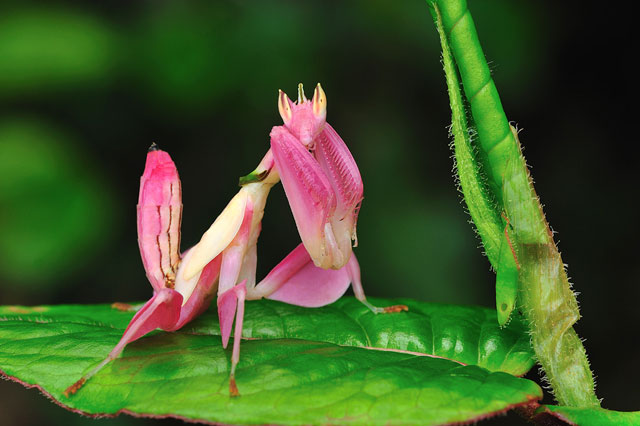Orchid mantis
An amazing bit of camouflage from the orchid mantis:

Seeing it move around is eerie. See also the bee orchid. (via @faketv)



This site is made possible by member support. ❤️
Big thanks to Arcustech for hosting the site and offering amazing tech support.
When you buy through links on kottke.org, I may earn an affiliate commission. Thanks for supporting the site!
kottke.org. home of fine hypertext products since 1998.
An amazing bit of camouflage from the orchid mantis:

Seeing it move around is eerie. See also the bee orchid. (via @faketv)
Tom Junod, in Esquire, tells the story of living on top of an Argentine Ant colony. In it, we learn that ant scientists estimate there are 1.6 million ants per person. For what it’s worth, ant colony is in the top 3 of my “List of things I do not want to live on top of”. I urge you not to click this link if you’re the type of person who can see an ant hill on a walk and then spend the next four hours feeling phantom ants on your legs and elbows.
They’re not just passing through, you see, on their way to somewhere else. They’re not in your underwear by accident. They’re nation-building.
I’ve now given myself the heebie-jeebies and will spend the next four hours brushing away every gasp of wind and brush of paper against my skin. Thank you.
Langstroth’s crucial insight — “I could scarcely refrain from shouting ‘Eureka!’ in the open streets,” he wrote of the moment of revelation — was the concept of “bee space.” He realized that while honeybees will seal up passageways that are either too large or too small, they will leave open passages that are just the right size to allow a bee to pass through comfortably. Langstroth determined that if frames were placed at this “bee-space” interval of three-eighths of an inch, bees would build honeycomb that could be lifted from the hive, rather than, as was the practice up to that point, sliced or hacked out of it. He patented L. L. Langstroth’s Movable Comb Hive in 1852. Today’s version consists of a number of rectangular boxes-the number is supposed to grow during the season-open at the top and at the bottom. Each box is equipped with inner lips from which frames can be hung, like folders in a filing drawer, and each frame comes with special tabs to preserve bee space.
So says Elizabeth Kolbert in an article about colony-collapse disorder, a bee disease that’s wreaking havoc on beehives and food production around the US. Bee space! I’m unsure whether similar research has been done to determine the proper “human space”, although the placement of houses in a suburb, tables in a restaurant, blankets at the beach, or social space in elevators might provide some clues as to the proper measurement.
But returning to the bees, a coalition of scientists working on the problem has found a correlation between bee deaths and Israeli acute paralysis virus. An infusion of bees from Australia in 2004 may also have contributed to the disorder’s development. Full details are available on EurekAlert.
Honeybee populations across the US are falling due to a mysterious disease. “Almond crops are immediately vulnerable because they rely on honeybee pollination at this time of year. And the insect decline could potentially affect other crops later in the year, such as apples and blueberries.”
Fascinating and disturbing video of a handful of hornets completely annihilating an entire colony of honeybees. (via cyn-c)
Fun bunch of Flickr photos from mleak depicting bugs and slugs shilling for the man: Pepsi Ladybug, Nike Water Strider, FedEx Grasshopper, Coke Slug, and Adidas Spider. (via bb)
Researching quantum honeybees. Can bees detect quantum fields and use them to find food?
Stay Connected